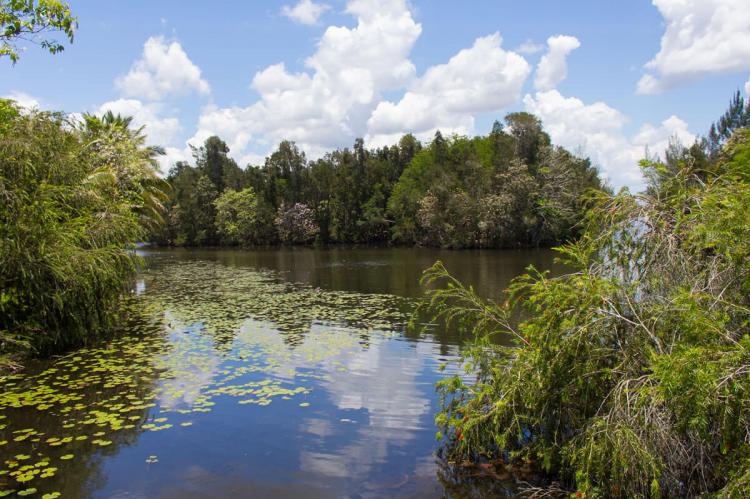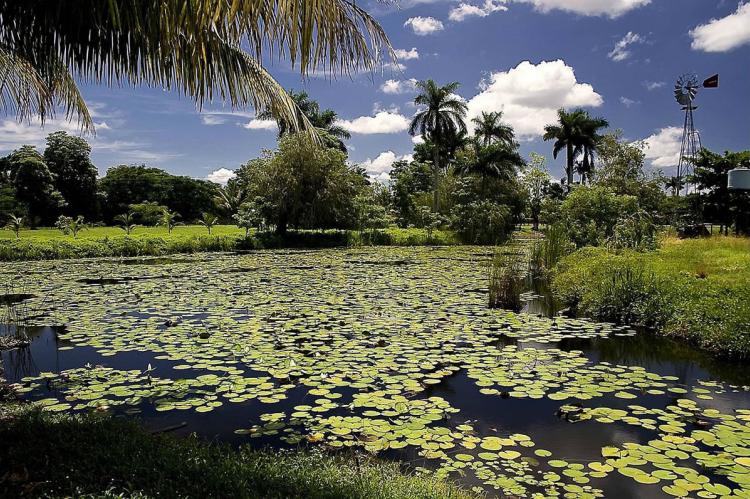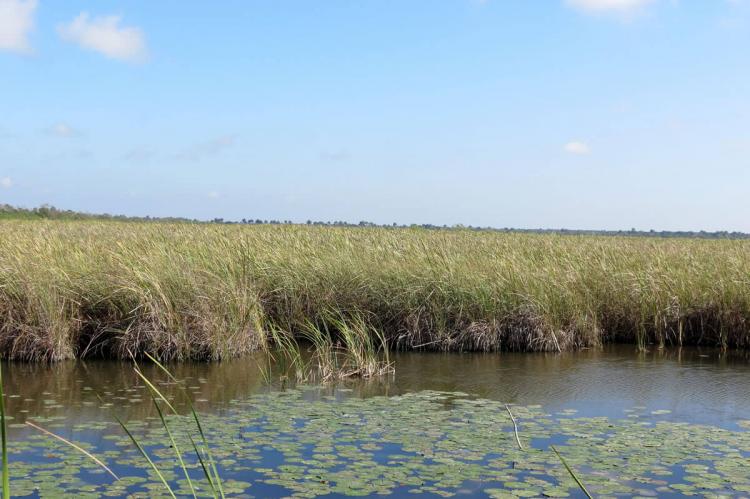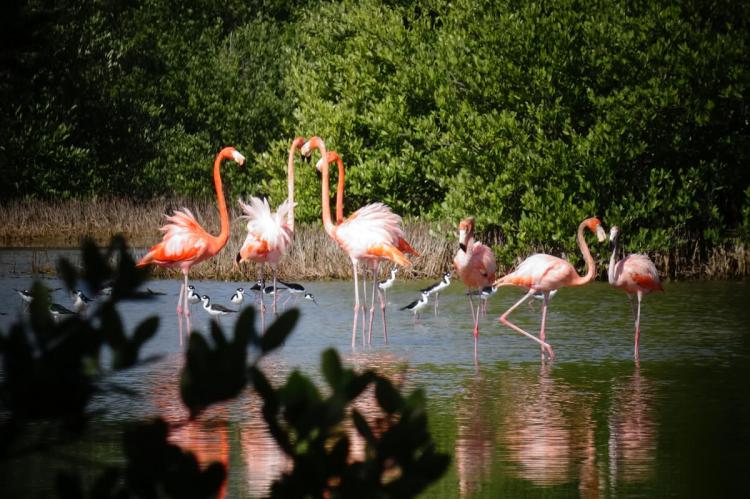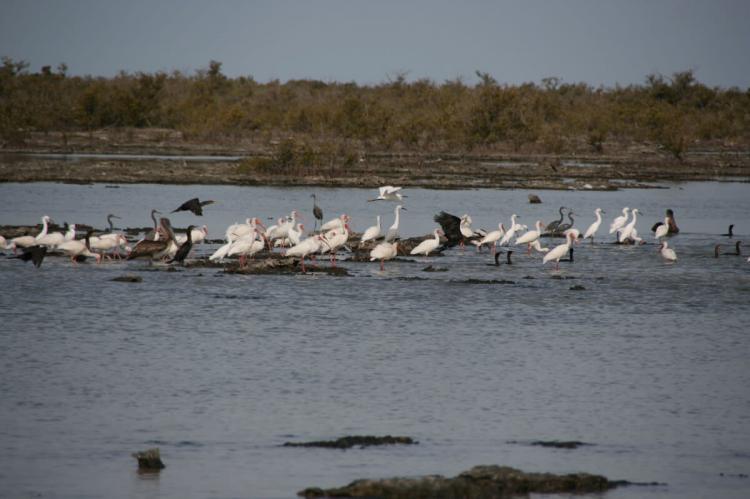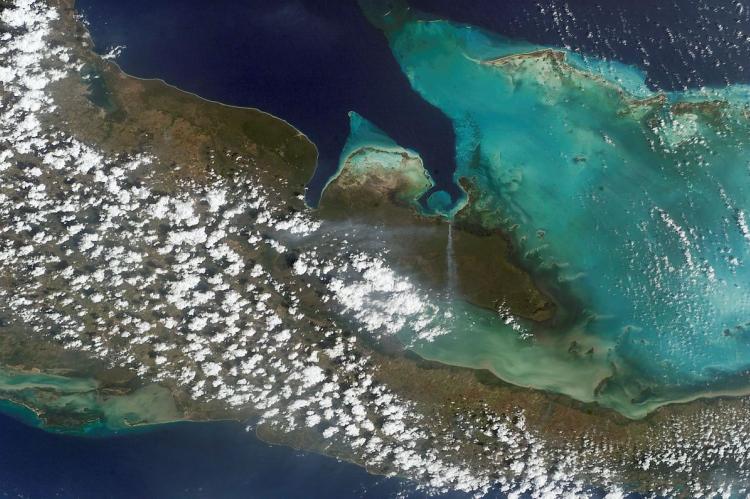Ciénaga de Zapata: A Sanctuary of Biodiversity in Cuba
The Ciénaga de Zapata, also known as the Zapata Swamp, is a significant wetland located on the Zapata Peninsula in southern Matanzas Province, Cuba. It is renowned for its rich biodiversity and is preserved by the Ciénaga de Zapata National Park and Biosphere Reserve.
Preserving Nature: The Rich Ecosystems of Ciénaga de Zapata
The Ciénaga de Zapata, also known as the Zapata Swamp, is a vast and ecologically significant region on the Zapata Peninsula in southern Matanzas Province, Cuba. Encompassing over 4,000 square kilometers (1,544 square miles), it is one of the Caribbean's most extensive and important wetlands. This area is renowned for its rich biodiversity, unique ecosystems, and significant conservation efforts. The Ciénaga de Zapata National Park and Biosphere Reserve are crucial in preserving this natural treasure.
Geographic Overview
Location and Boundaries
The Zapata Peninsula is strategically positioned less than 150 kilometers (93 miles) southeast of Havana. Ensenada de la Broa borders it to the north, the Gulf of Batabano to the west, and the Gulf of Cazones to the south. The Bay of Pigs, infamous for its historical significance, marks its eastern limit. The Carretera Central Highway defines the northern boundary of this expansive region.
Environmental Protection Areas
The Zapata Swamp encompasses several designated environmental preservation areas, including the Zapata Swamp Natural Reserve and Las Salinas Wildlife Sanctuary. These areas are integral to the larger Ciénaga de Zapata Biosphere Reserve, highlighting the region's commitment to conservation.
Biodiversity and Ecosystems
Flora and Fauna
The Ciénaga de Zapata is a biological hotspot, home to an astonishing diversity of species. The swamp hosts over 900 plant species, 175 bird species, 31 reptile species, and more than 1,000 invertebrate species. Notable among these are several endemic species unique to Cuba. The Zapata wren, Zapata rail, and Zapata sparrow are exclusive to this region, while the Bee hummingbird, the smallest bird in the world, also inhabits the swamp.
The Cuban crocodile (Crocodylus rhombifer), endemic to the Zapata Swamp, is a key species, and efforts are underway to reintroduce it to the nearby Lanier Swamp on the Isle of Youth. Additionally, sixty-five bird species pass through the Zapata Swamp during their migratory journeys from North America through the Caribbean to South America.
Diverse Ecosystems
The Ciénaga de Zapata Biosphere Reserve showcases various ecosystems and land cover types. The Ciénaga grasslands are characterized by herbaceous species such as Cladium jamaicence, Eleocharis interstincta, and Eleocharis cellulosa. Mangrove forests are home to all four mangrove species found in Cuba: Rhizophora mangle, Avicennia germinans, Laguncularia racemosa, and Conocarpus erecta.
The Ciénaga forests are characterized by Bucida buceras, Tabebuia angustata, Calophyllum antillanun, and Rauwolfia cubana. Semi-deciduous forests are dominated by Lysiloma latisiligua, Bursera simaruba, and Ceiba pentandra. Additionally, the region includes evergreen coastal and sub-coastal forests, coastal and sub-coastal matorral, and coral reefs hosting species such as Porites porites, Porites asteroides, Manicina areolata, Siderastrea radians, and Acropora cancellata. Coastal lagoons are also essential for various aquatic species.
Conservation Efforts
Ciénaga de Zapata National Park
The Ciénaga de Zapata National Park is the Biosphere Reserve's core area and the Ramsar site. It was submitted for nomination to the World Heritage List in 2003, emphasizing its global significance. The park is a focal point for conservation activities and environmental education.
Ramsar Site Designation
In 2001, the Zapata Swamp was designated a Ramsar site, recognizing its international significance as a wetland. This designation supports ongoing conservation efforts and highlights the area's ecological value.
Socio-Economic Aspects
Local Communities and Economy
Approximately 9,000 people, primarily of Spanish descent, reside permanently in the Ciénaga de Zapata region. Their livelihoods are intertwined with the swamp's natural resources, with economic activities including silviculture, fisheries, community agriculture, tourism, handicrafts, and apiculture.
Sustainable Development
Tourism plays a crucial role, attracting over 800,000 visitors annually. This influx supports local economies and fosters community involvement in decision-making through public hearings and councils organized by local government. The region's designation as a special area for sustainable development ensures that economic activities do not compromise environmental integrity.
International Cooperation
The Ciénaga de Zapata Biosphere Reserve is twinned with the Ría Lagartos Biosphere Reserve in Mexico, promoting international collaboration in conservation efforts and sustainable development practices.
Conclusion
The Ciénaga de Zapata stands as a testament to Cuba's rich biodiversity and natural beauty. Its diverse ecosystems, unique species, and significant conservation efforts make it a vital region for ecological research and sustainable development. As one of the Caribbean's largest wetlands, it continues to be a focal point for environmental preservation and a symbol of the harmonious coexistence of nature and humanity.
